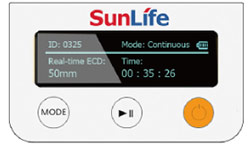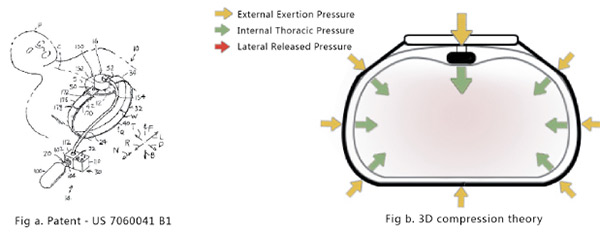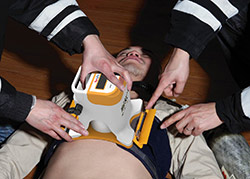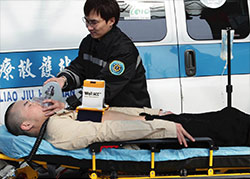Weil SCC™
3D COMPRESSION –
THIRD GENERATION CPR TECHNOLOGY
> Patented product from Weil Institute of Critical Care Medicine |
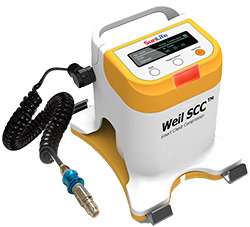 |
||||
Real-time compression depth feedbackAccording to the latest literature, during cardiac arrest rescue, the real-time cardiac compression depth feedback data is very important, and will greatly enhance the quality of CPR.
The full data linkage interfaceWeil SCCTM links with the defibrillator and ventilator, which means during CPR process, compression data, defibrillator data and respiratory data can be linked together effectively.3D Compression Technology3D compression technology combines both cardiac and thoracic pump theory. This patent is owned by Weil Institute of Critical Care Medicine . |
|||||
Two Revolutionary Changes1.Portable and Easy to Operate 2. Continuous Uninterrupted Chest Compression "During cardiac arrest, without time delay to carry out CPR with emphasis on the improvement of high-quality chest compression” ------《2010 AHA Guidelines for CPR & ECC》 “High-Quality chest compression with emphasis on at least 100 compression per minute and compression depth at 2 inches for adult,......Minimizing interruptions in chest compression and avoiding excessive ventilation.” ------《2010 AHA Guidelines for CPR & ECC》 |
|
||||
> Ristagno G, Castillo C, Tang W, Sun SJ, Bisera J, Weil MH. Miniaturized mechanical chest compressor: a new option for cardiopulmonary resuscitation. Resuscitation 2008;76:191-197
> Tang W, Weil MH, Noc M, Sun SJ, Gazmuri RJ, Bisera J. Augmented efficacy of external CPR by intermittent occlusion of the ascending aorta. Circulation 1993;88(1):1916-21
> Tang W, Weil MH, Sun SJ, Kette D, Kette F, Gazmuri RJ, O’Connell F, Bisera J. Cardiopulmonary resuscitation by precordial compression but without mechanical ventilation. Am J Resp Crit Care Med 1994;150:1709-1713. [Abstracted in Resuscitation 1995;29:268-269]
> Tang W, Weil MH, Schock RB, Sato Y, Lucas J, Sun SJ, Bisera J. Phased chest and abdominal compression-decompression: A new option for cardiopulmonary resuscitation. Circulation 1997;95:1335-1340. [Abstracted in Resuscitation 1997;35:276].
> Sato Y, Weil MH, Sun SJ, Tang W, Xie J, Noc M, Bisera J. Adverse effects of interrupting precordial compression for repetitive electrical defibrillation. Crit Care Med 1997;25:733-736
> Yu T, Weil MH, Tang W, Sun SJ, Klouche K, Povoas HP, Bisera J. Adverse outcomes of interrupted precordial compression during automated defibrillation. Circulation 2002;106:368-372
> Klouche K, Weil MH, Sun SJ, Tang W, Povoas HP, Bisera J. Stroke volumes generated by precordial compression during cardiac resuscitation. Crit Care Med 2002;30:2626-2631
> Pernat A, Weil MH, Sun SJ, Tang W. Stroke volumes and end-tidal carbon dioxide denerated by precordial compression during ventricular fibrillation. Crit Care Med 2003;31:1819-1823
> Fries M, Weil MH, Chang YT, Castillo C, Tang W. Microcirculation during cardiac arrest and resuscitation. Crit Care Med 2006;34:S454-7
> Ristagno G, Tang W, Chang YT, Jorgenson DB, Russell JK, Huang L, Wang T, Sun SJ, Weil MH. The quality of chest compression during CPR overrides importance of timing of defibrillation. Chest 2007;132:70-75
